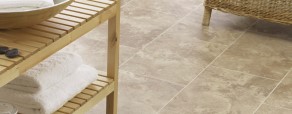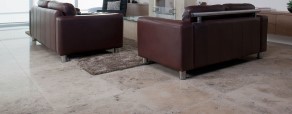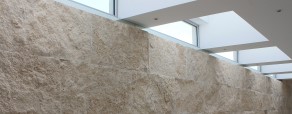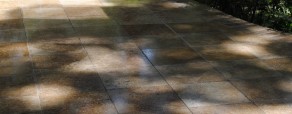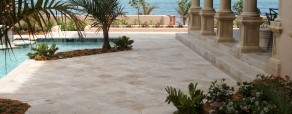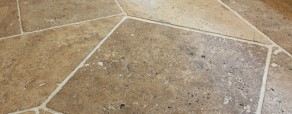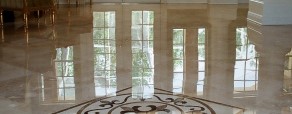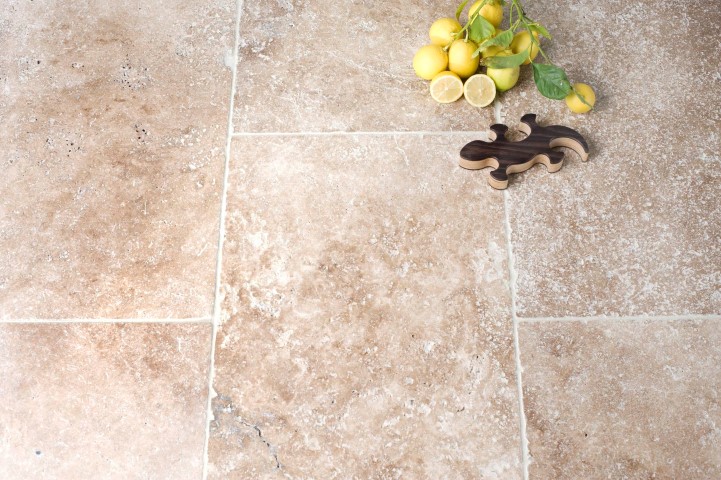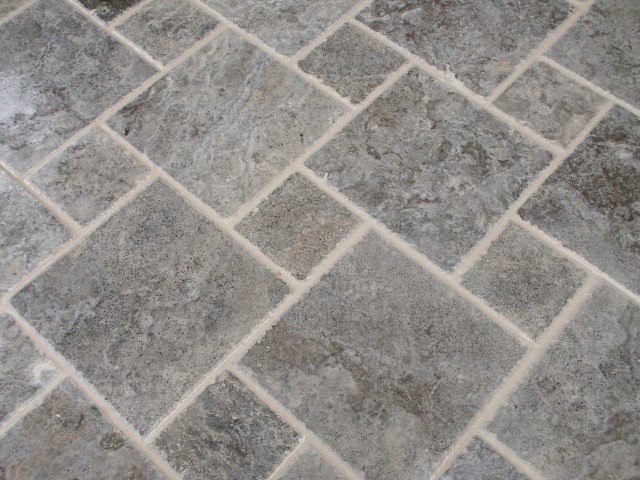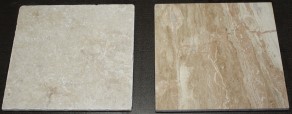INFORMATION ABOUT TRAVERTINE
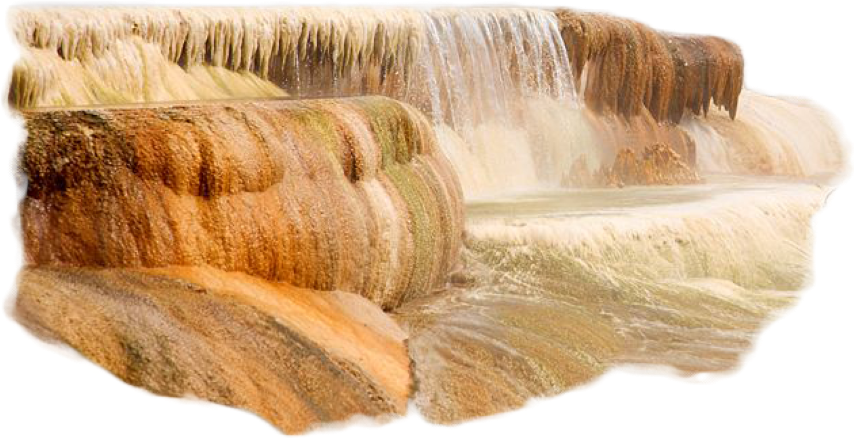
Travertine is a chemical sedimentary rock formed by precipitation of calcium carbonate at the mouth of a hot spring or in a limestone cave from the underground or surface waters. The holes within the material form by the evaporation of carbon dioxide in these waters when they blow out earth surface.
Species are frequently used in constructions as a natural material from old dates.Thanks to its completely natural appearance, it can be used as a wall cladding and flooring to give a decorative appearance. Varieties, which are found in light and dark brown tones, are divided into groups as characters.Although similar appearance of this stone's quarries located in different regions of Turkey; some features may vary.The productions made in Denizli are in the foreground due to the proximity of the quarries.Thanks to the production of travertine for many years; the selection has been recognized by the whole world as Turkish stone and is used in many international projects.
Thanks to our quality production and selection system in our factories; the stones in the determined criterias can be prepared as cut-to-size or as slab.The product which is frequently used in exterior cladding of high buildings because it has a homogenous appearance and has a smooth and natural appearance due to its color transitions in coffee tones.It can be applied from the stones with different vein structure based on preference in interior and villa type places.The application of antiquated surface treatment gives a historical appearance.Compared to other types of natural marble, it is softer in structure and therefore easier for sizing and use.Since the travertines are perforated, filling works must be done.In the stones that are applied without fillings in the factory, the small holes on the surface over time allow the dirt to appear darker as the surface is filled with dirt.
According to the usage area, it is necessary to make the necessary procedures in the factory and send it to the application area.The holes found in blocks extracted from certain quarries may have many sizes and proportions. Quarries should be determined according to the demand before the production stage and the desired surface appearance.In high meters production, taking a block from a single quarry is important for the healthy continuity of the project.There are differences in the surface appearance of the products made from blocks to be taken from different quarries.Turkish stone shave 2 different cut shapesthat change their appearance considerably which are cross cut and vein cut.According to the block direction cut in the plant, if the waterways are visible on the slabs after the cutting operations, this cutting process is called the "vein-cut”.Before the production phase, the surface appearance and operations should be determined and notified to the factory and suitable production should be made in the projects requiring vein follow-up.

United States of America carried of 55 % of its material needs from Turkish natural stone companies. Arab countries, Europe and the Turkic Republics stand out in this regard.Quality productions made for many years; has shifted to Italian machine technology over time, bringing its quality to world standards.Regarding polish quality, precise cutting and material quality, Turkey has become a recognized brand in the world.Materials commonly used in constructions such as business centers, hotels and villas; is produced in export quality by producing high quantityas the requested quantity.During production and afterwards, quality control is carried out and low quality ones are removed.According to project requirements, 2 cm slabs or cut-to-size material production is done continuously.After the filling process, the required surface treatment is carried out and the production is finalized.Surface treatments such as pool edges, which are not required to be skidded, can be applied slightly honedtreatments in the factory.
Our Turkish travertine sales are made according to the selection requested from our factory.Exports to many countries of the world are realized through the ports of Izmir, Antalya and Mersin.Requests made on a project basis are produced at certain times and prepared in export quality.The production in different sizes such as flooring, cladding, step and skirting, which may be necessary in the same project, is made in the same selection to create the integrity throughout the application.
Travertine Usage Areas
This stone mostly used as an interior and exterior construction material from Ancient times to today. In ancient times especially Romans used selection for their construction of amphitheatres, temples, baths and monuments. Because this has antique appearance modern architecture highly appreciate to use interior and exterior projects like wall claddings, pool decks and steps, patios, bathroom and showers, sinks, medallions, fireplaces and floorings.
Indoor Travertine Usage Areas
Outdoor Travertine Usage Areas
Travertine Colours and Finishes
Turkey known as with rich travertine reserves and species in the World. Some important colours of Turkish material is ivory, beige, light walnut, dark walnut, noche, silver and gold. Because of this structure there are some local specific species of travertine like chocolate, navona, emerald etc.
Finishes of this determine the main usage areas:
Polished Finishes; used in commercial applications.
Tumbled Finishes; look antique appearance and mostly used in outdoor applications.
Honed Finishes; ensure matte appearance and mainly preferred for interior designs.
Brushed Finishes; can be used in slippery surfaces like pools to prevent accidents
Saw-Cut Finish; is the raw status. No finish applied on material surface.
- Unfilled state is natural appearance of with holes.
- Filled travertine is fabrication process by filling the porous holes by cement or resin to provide unique outlook.
Grade of this determined by the density of holes on it. The lesser the holes higher the grade of travertine. Low quality material looks porous structure like sponge.
A standard tile is 1/2'' thick but also 3/8″ or 5/8″ tiles thickness are demanded. For pavers 1 1/4'' is standard thickness but also according to demand 2'' thickness or more can be produced.
12''x12'', 16''X16'', 18''x18'', 24''X24'' sizes are more demanded sizes; 3″x6″, 4″x4″, 4″x8″, 6″x6″, 8″x16″, 8″x8″, 8″x8″, 12″x12″, 12″x24 are rarely demanded but can be produced according to demand.
Travertine Edge Details
Two types of travertine appearance obtained according to block cutting into slabs. When block is cut vertically water veins come out; this type of this material is called vein cut. When block is cut horizontally; this type of stone is called cross cut.

